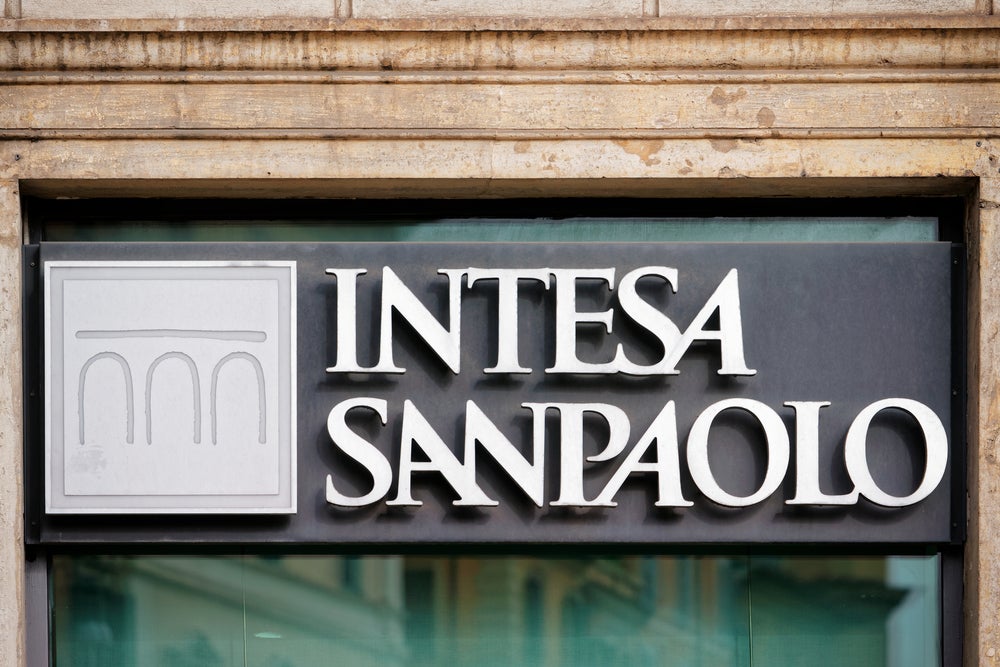families are intending to increase their exposure to alternative
assets such as commodities and hedge funds as they look to further
diversify their investment portfolios. Problem is: who do they
really trust as advisers? Dan Jones reports.
The gathering trend towards investment diversification among high
net worth families, and other factors, may require them to look to
external providers, but confidentiality concerns remain paramount
among family offices that do not yet collaborate regularly with
each other, let alone major financial institutions.
Single family offices are looking to tilt their portfolio
allocations in favour of alternative assets over the next three
years as part of a deep-seated fine-tuning of investment
priorities. But overall strategies will remain balanced as the
desire to consolidate wealth continues to trump all other
priorities.
The importance of this objective is emphasised by the fact that not
one European single family office (SFO), of the 30 that
participated in a major new study by Merrill Lynch and Campden
Research, cited “aggressive growth” as the driving force behind
their investment activities.
By contrast, 57 percent described a “balanced approach” as their
main investment aim, with 29 percent intending to “preserve” or
“preserve very conservatively” their assets under management (AuM).
A “growth” strategy was cited by just 14 percent.
Aggressive asset allocations
How well do you really know your competitors?
Access the most comprehensive Company Profiles on the market, powered by GlobalData. Save hours of research. Gain competitive edge.

Thank you!
Your download email will arrive shortly
Not ready to buy yet? Download a free sample
We are confident about the unique quality of our Company Profiles. However, we want you to make the most beneficial decision for your business, so we offer a free sample that you can download by submitting the below form
By GlobalDataThe freedoms enjoyed by single family offices in Europe mean that
while overall objectives remain balanced, asset allocations are
already typically more aggressive than those seen in the
institutional world, with alternative assets currently making up 48
percent of the average SFO investment portfolio. Fewer regulatory
requirements, the absence of a need to focus on quarterly growth
and an intergenerational outlook provide the basis for a long-term
approach to investing that is set to shift further towards
alternatives in the coming years.
In light of this, it is a surprise that stated investment
objectives are not slanted towards taking more risks in order to
achieve a better return in the long run, according to Gary Dugan,
chief investment officer, global wealth management EMEA at Merrill
Lynch.
Of the family offices that replied to the study, 39 percent had
more than €1 billion ($1.5 billion) in AuM. Twenty-four percent
managed between €50 million and €250 million, while 17 percent had
investable assets of between €250 million and €500 million. Ten
percent had less than €50 million in AuM.
On average, the cost of running an SFO is 62 basis points (bp) of
AuM; economies of scale mean that this rises to 89bp for those with
AuM totalling not more than €250 million, and falls to 48bp for
SFOs with AuM of €1 billion or more.
But the correlation between the size of an SFO and asset allocation
is less clear. Offices with AuM of less than €250 million retain a
largely traditional investment outlook, with the largest offices
also currently continuing to favour traditional assets, albeit in a
slightly diluted form. It is mid-sized SFOs, with AuM of between
€250 and €500 million, that have forged ahead with a more uncommon
strategy, currently favouring a ratio of 31 percent traditional to
69 percent alternative assets.
Shifting preferences
Over the next three years, the preference of the mid-sized SFOs is
likely to extend to the wider SFO market, with the existing ratio
of traditional assets (52 percent) to alternative assets (48
percent) shifting to a 45 percent to 55 percent split.
SFOs anticipate that their biggest moves will be into commodities,
hedge funds and funds of hedge funds, which are seen as gaining
three, two and two percentage points respectively. The increases
will come at the expense of equities and fixed income, each of
which are expected to lose three percentage points over the next
three years.
“There must be family offices now looking at targeting investment
products that give some kind of hedge against the rampant inflation
we’ve experienced over the past few years,” Dugan commented.
Equities will remain the largest single asset class, though their
portfolio share is seen as falling from 34 percent to 31 percent,
with fixed income falling from 13 to 10 percent. Other alternatives
expected to become more popular with SFOs over the next three years
include real estate, up from 16 to 17 percent of the average
portfolio. In total, 57 percent of family offices said they
expected to shortly invest more in real estate.
The study was conducted prior to the most recent major stock market
falls, but the change in outlook is seen as a fundamental shift
rather than a reactionary move, despite inflation concerns. Most
SFOs have served at least two generations of family members and are
not in the business of making major structural changes to their
portfolios.
Accordingly, the significance of the move towards alternative
assets conceals more incremental changes within asset classes
themselves. “The breakdown by asset allocation looks in some sense
like an endowment fund from the US – it would hold up against the
most enlightened investors. We don’t expect to see any major
changes over the next three years,” said Dugan.
Such strategies reflect the long-term outlook of family offices,
with the research pointing to one German family office that reduced
its real estate weighting from 50 percent to 34 percent, but only
over the course of a 20 year period. The example is also feasibly
linked to the caveat that some SFO portfolios have been shown to
include the family business, a factor that can affect individual
asset weightings and thereby distort the average asset allocation
picture.
Catalyst for creation
The sale of a family business, or rather the resultant proceeds,
provided the catalyst for the creation of an SFO in 26 percent of
cases. The benefits of scaling family wealth in order to provide
greater returns meant that 33 percent set up their office with the
specific intention of establishing a professional wealth management
operation.
Some 52 percent of SFOs serve between one and five clients, with a
further 19 percent serving between six and ten. Employment figures
are similarly low, with 67 percent employing between one and 15
members of staff. The figure also involves a degree of crossover –
almost two-thirds of SFOs employ one or more family members as part
of the business.
The principal reasons for this are seemingly twofold. The first is
the importance of family succession, seen as one of the main
challenges facing SFOs , although opinion is divided over whether
family members are better served learning the ropes within a family
office or prior to getting involved in the business. The second is
confidentiality, frequently cited as being of fundamental
importance, second only to the consolidation and control of wealth
as a primary business objective.
However, despite this emphasis on privacy and control, the study
indicates that SFOs will continue to provide opportunities for
external financial services providers. This finding echoes a recent
family office study from US consultancy Cerulli (see PBI 233), but
while that research indicated that economies of scale made
outsourcing attractive to larger multi-family offices (MFOs), the
Merrill study identifies smaller offices as the predominant
outsourcers within the SFO market.
A viable SFO
Assessments of what constitutes a viable SFO vary among the offices
themselves. Despite 34 percent of respondents having less than €250
million in AuM, 31 percent of SFOs agreed that this figure is the
minimum amount required to run a viable SFO operation. “It all
depends on how many people the family office is providing services
to, what kinds of services, and the balance of in-house and
outsourced services,” said one family office head quoted by the
study.
Smaller SFOs typically see 75 percent of their costs accounted for
by outsourcing needs, the research noted. Mid-sized offices usually
outsource selectively for portfolio diversification reasons. But
offices rarely outsource investment functions in full; according to
the study, just 17 percent do so. Rather, the opportunities for
external providers come from advisory services and in other, more
limited capacities. Legal services are fully outsourced by 55
percent of respondents, with 38 percent and 45 percent doing the
same for tax planning and insurance planning, respectively.
A focus on in-house investment activity, amid concerns over the
control of wealth, means that investment banks are used as a main
financial services provider by just 43 percent of SFOs, and private
banks by just 36 percent. Asset managers, by contrast, are a key
external partner for 75 percent of offices.
Private banks are often seen as competitors, particularly for
larger SFOs, or failed former partners. “Our family office was set
up largely as a result of the failings of private banks,
particularly in the area of independent advice,” said one unnamed
SFO head.
Nonetheless, the need for independent guidance and governance still
presents opportunities to providers – external committee members
comprise one-third of the average investment committee and
one-quarter of the average owners’ committee within an
office.
Again, confidentiality features highly on the list of criteria for
choosing a financial services provider, and accordingly is one of
the most valued aspects of customer service proposition. While
innovation is cited by just 10 percent in this latter category, a
strong investment track record is crucial. With alternative assets
increasingly finding favour across all sizes of SFO, this trend may
demand that offices cultivate additional external
relationships.
“A big heavy bias towards alternatives requires a big team, it
requires ongoing monitoring of things that don’t have a price on
the screen every day of the week,” said Dugan. Merrill and Campden
believe that institutions that can develop tailored, long-term
relationship strategies for SFOs will also find opportunities in
coming years. The prediction corresponds with the fact that a
personalised service ranked as the most valued customer service
proposition for SFOs.
Willingness to collaborate
A desire to align goals and strategies means family offices are
typically more receptive to the prospect of collaboration with
other offices. Almost 71 percent of SFOs have collaborated on
investment opportunities, though 60 percent do so only
occasionally. The trend for SFOs to develop into MFOs, now
commonplace in the US, can be seen in some European offices’ desire
to provide investment management services to other, smaller
offices.
Yet with just one in ten SFOs asserting that they frequently
cooperated with other offices, the market remains opaque and
privacy issues are as relevant here as in SFOs’ dealings with the
wider financial sector. But Dugan believes that issues such as the
proposed changes to the taxation of non-domiciles in the UK, in
addition to the greater demands that alternative-heavy allocations
will put upon businesses, will serve to bring offices closer
together in order to discuss strategy.

Intergenerational demands
Tax is one of a number of issues likely to play increasingly
important roles in the governance of an SFO in future. The
intergenerational demands of a family office, for example, will not
yet have made themselves apparent to the 32 percent of SFO
respondents that were set up after the turn of the
millennium.
It is here, Merrill suggests, that the need for more formal
structures becomes apparent, as each new generation becomes more
distant from the original wealth creator. Cross-border strategies
will also become more significant as businesses globalise. As one
SFO head concluded, a successful family office “will need to
specialise and professionalise, and this will lead to the
separation and segregation of formerly united functions”.








